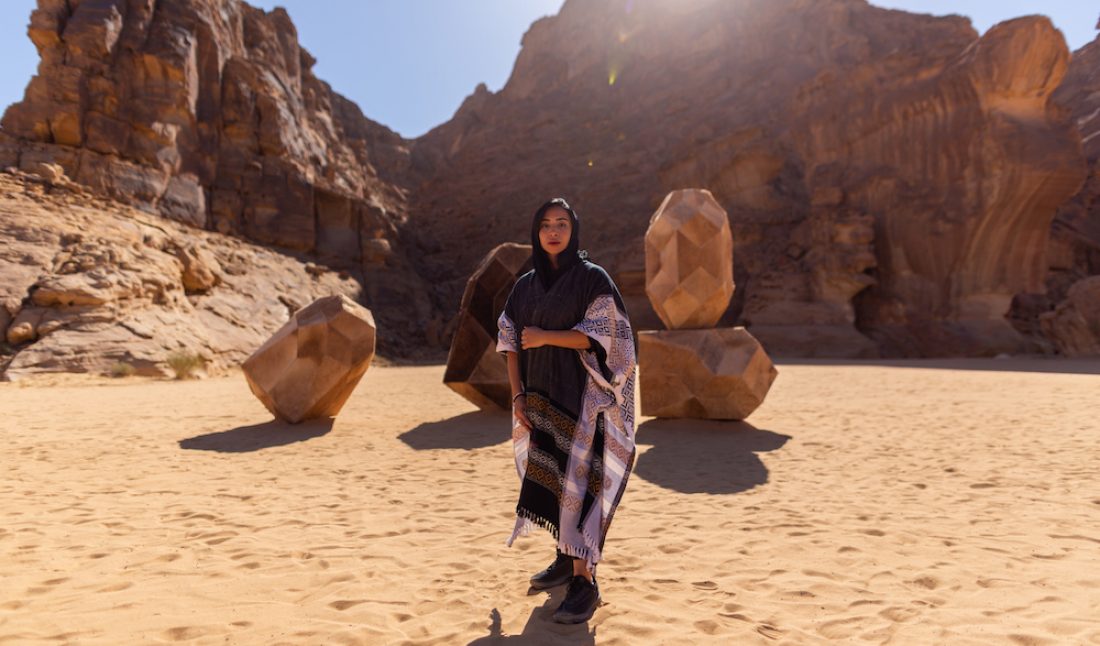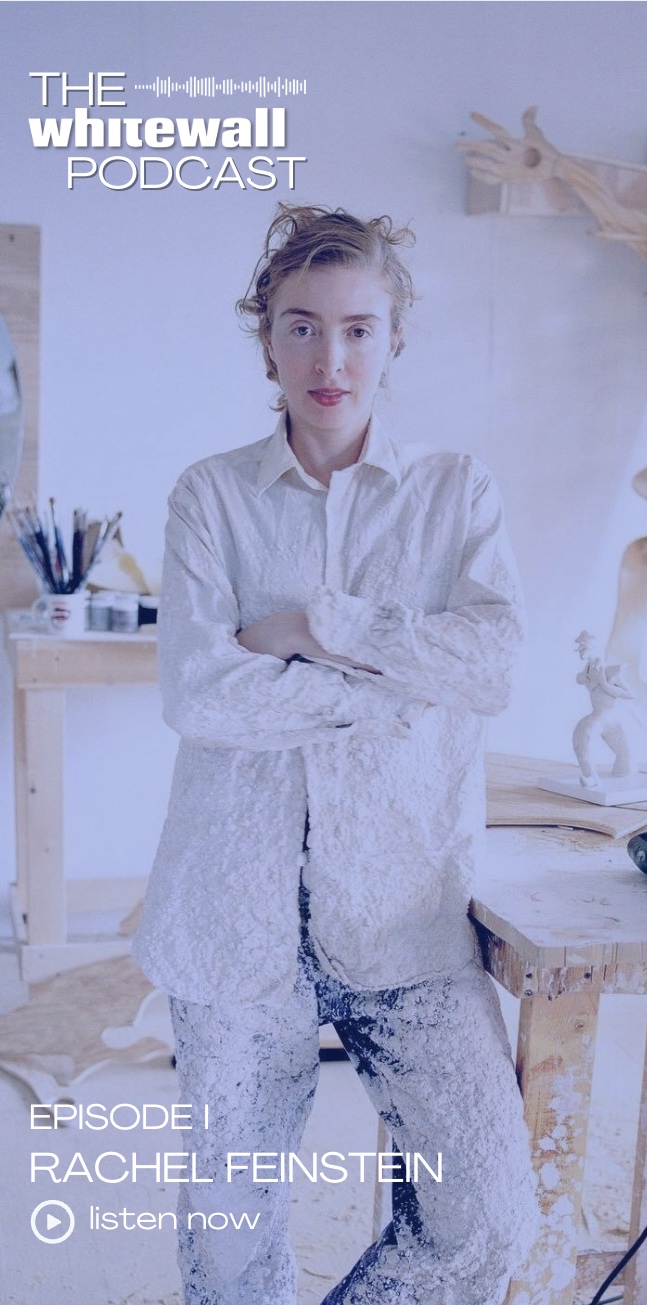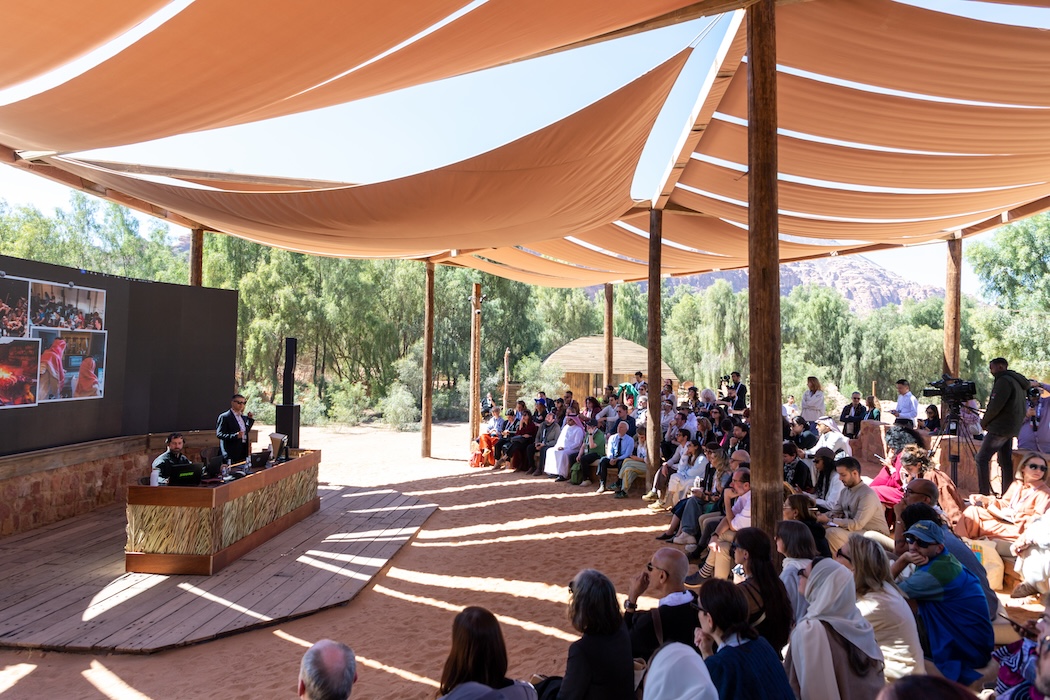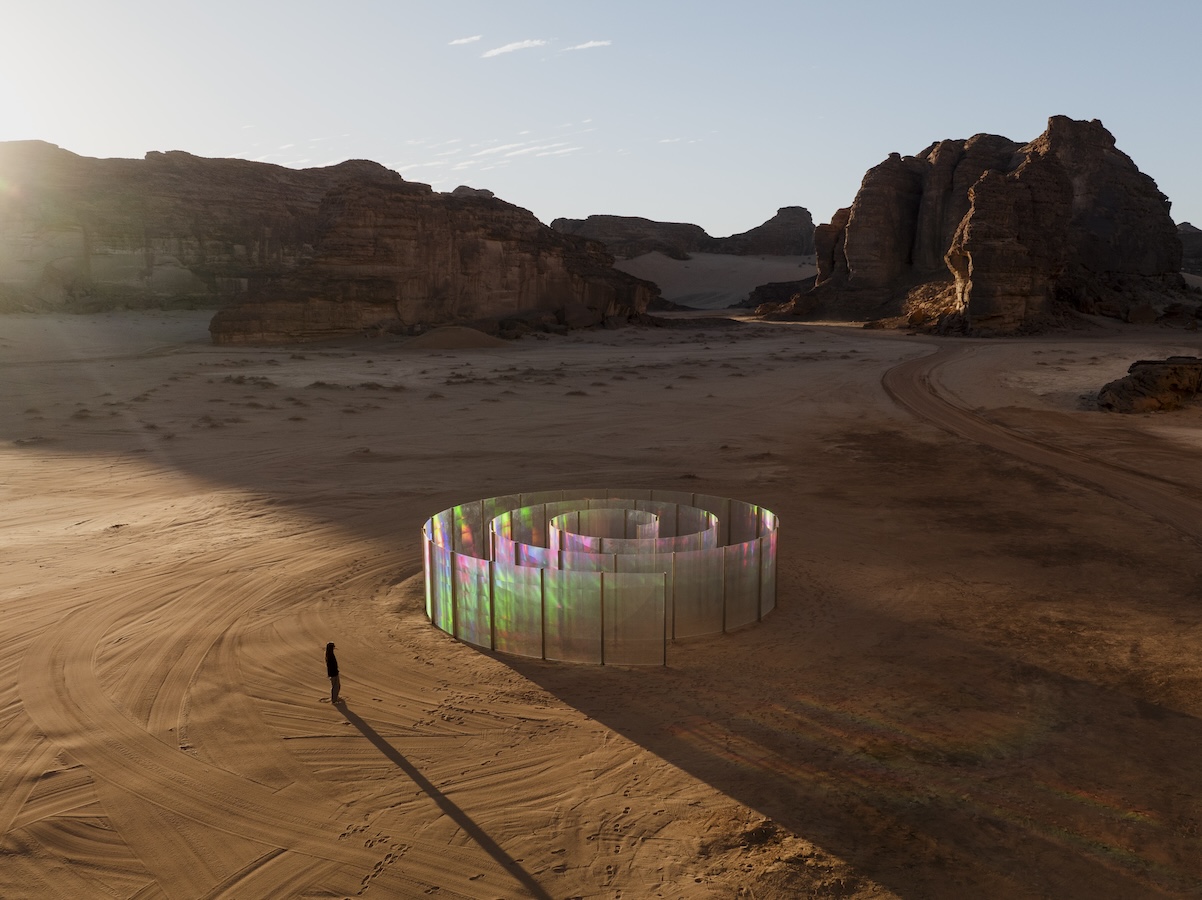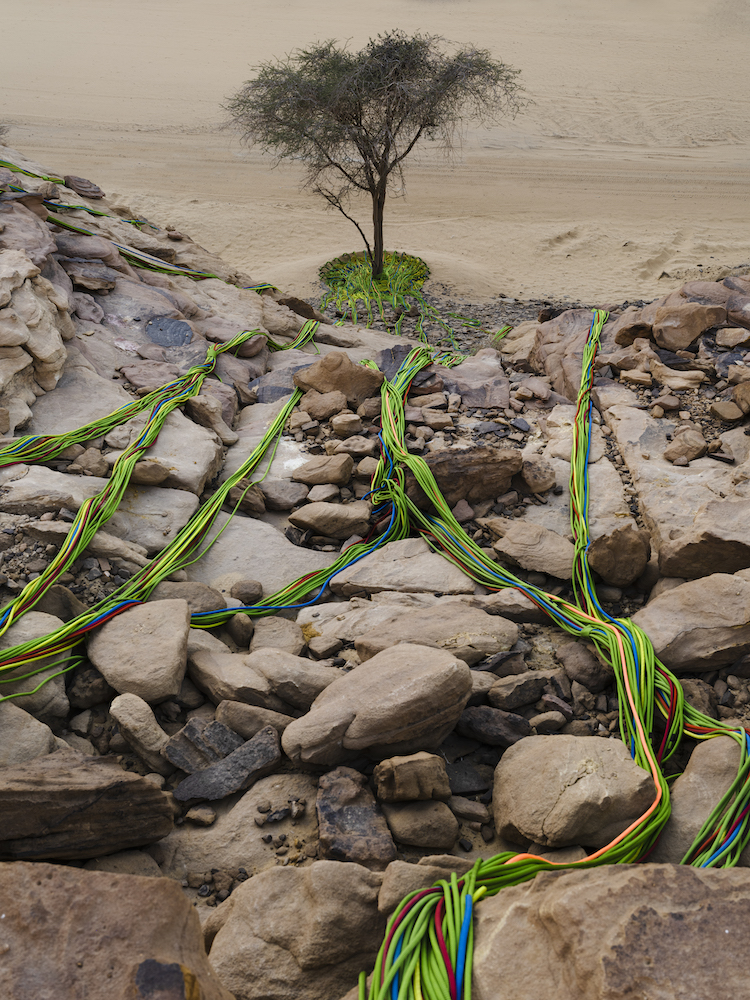The work of Emirati conceptual artist Zeinab Alhashemi is currently on view in the second edition of Desert X AlUla. The site-specific installation, Camouflage 2.0 builds an oasis all her own amid the dynamic desert landscape. With it, Alhashemi is encouraging visitors to take a closer look and wholly experience her artwork with all their senses.
When working at her studio in Dubai, Alhashemi draws inspiration from the extreme evolution of the city where she has lived all of her life. The textures and shapes of UAE’s large-scale modernization are interwoven with the rich natural landscape—and Alhashemi has absorbed all of it. For this particular project, on view through the end of March, she took her passion for the intersection of the natural and the industrial to new heights—wrapping a geometric sculpture in taut camel hide, giving unexpected warmth and luster to the facets of a faceted structure. Surrounded by immersive rocky mountains and caverns, the jewel-like piece could indeed be mistaken for a mirage beautifully appearing.
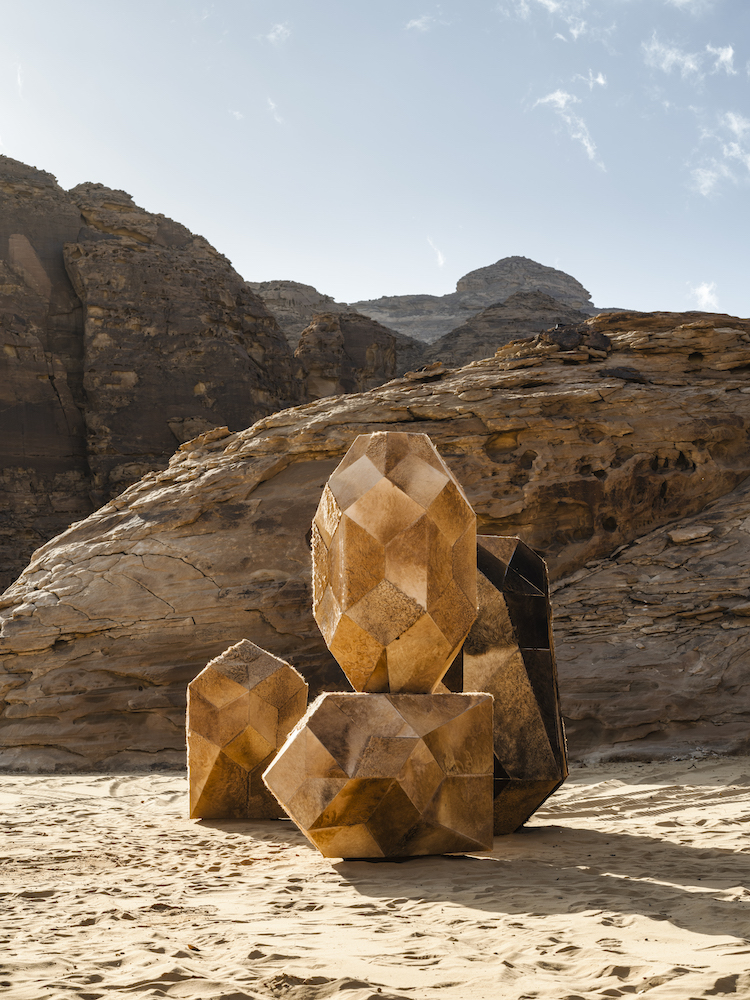 Zeinab Alhashemi installation view at Desert X AlUla 2022, photo by Lance Gerber.
Zeinab Alhashemi installation view at Desert X AlUla 2022, photo by Lance Gerber.
Whitewall had the opportunity to speak with the artist during the opening of Desert X AlUla, where she shared the making of this very personal journey.
WHITEWALL: Where did you begin with this project?
ZEINAB ALHASHEMI: On a personal level, I’ve always had a connection with the desert. I always say there are parts of nature that when you go, you feel grounded. For me, it’s always been the desert.
When I came to the site, the first thing that caught my attention was the rock formations—which is not something that I was familiar with. Something about those rock formations reminded me of when I was walking around and I saw camel traces. I asked, What happens to the camels? I was being a little bit sarcastic. I know because of the art event they will take out the camels. I understand how sometimes we are trying to be dominant over nature as a human race. For me, it was a natural reaction. I said I will bring back the camels. I meant I will use the camel hides to represent my idea. Basically, the pieces of stones are mimicking the rock formations but maybe they are just camels about to become rocks. It’s that sort of metamorphosis or mimicking nature in a different material.
Part of my research is also working with the concept of natural selection from Charles Darwin. It is known that intelligent species select what works in their environment. For camels, they have very thick lashes because they need to protect their eyes from the wind. Parts of the camels’s hides are very similar to the sand. It’s trying to blend with nature. I thought this would be a very interesting approach to bring into this art exhibition or more public art intervention.
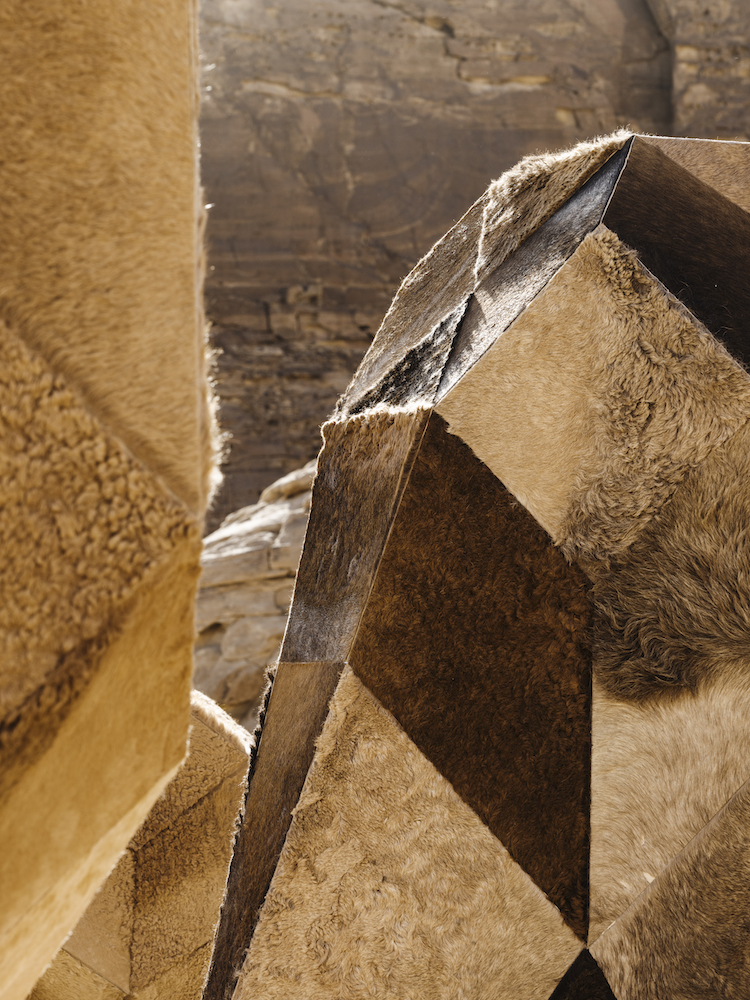 Zeinab Alhashemi installation view at Desert X AlUla 2022, photo by Lance Gerber.
Zeinab Alhashemi installation view at Desert X AlUla 2022, photo by Lance Gerber.
WW: How should visitors interact with the piece?
ZA: I would be interested to see people not really understanding what is the material and then when they get close to the artwork, I encourage them to touch it and feel the hides, the natural skin. It’s interesting because it comes in different textures and different colors.
WW: Can you tell us more about the material choice?
ZA: I started working with camel hides in 2015, so it was something that I was always interested in. But I always showed it in an art exhibition environment, in a gallery. Everything is white, clean. All of a sudden, there is this interesting material that people get close to and try to really understand where it is coming from. Curiosity is something that definitely is always encouraged. It’s blended with nature. You don’t notice it, and then you see it. It’s like camouflage. Basically, that’s the way of selecting the material.
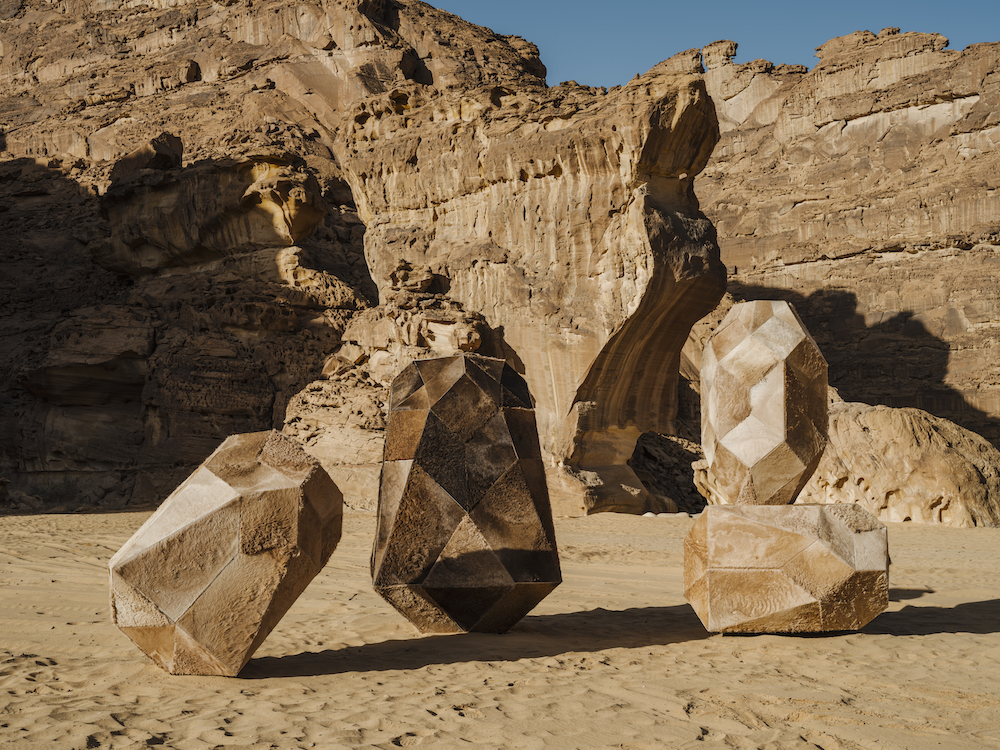 Zeinab Alhashemi installation view at Desert X AlUla 2022, photo by Lance Gerber.
Zeinab Alhashemi installation view at Desert X AlUla 2022, photo by Lance Gerber.
WW: What kind of dialogue did you want to create between natural shapes and man-made?
ZA: Since I started making art (it’s been 12 years), I always go back to man-made versus nature in my concepts. Part of my material is natural and the other parts of it is industrial. I always use a lot of steel, metal, but at the same time it’s not only part of the build-up, it’s part of the aesthetics. I try to allow people to actually notice the industrial feel in my work.
In this work, you see mostly the hides, but if you go close and you touch them it’s made out of steel. It’s supposed to be durable to nature’s conditions. I’ve always been interested in fabricating art, exploring, not only sitting in my studio. So when it comes to natural versus man-made, my interest is to go to the industrial area around my city and make art out of it; make art out of metal beams, metal screws, metal rods. I’ve exaggerated the idea of construction in my work.
Personally, because of my environment, where I grew up, it was for me a very natural selection. I grew up in Dubai, so construction is every day. I discuss it on all of my projects. I say I like to deconstruct and reconstruct.
WW: You mentioned that geometry is everywhere.
ZA: I think that geometry is from the start of everything until the very end of everything. Meaning, it is the way the universe has been constructed. I’m interested in the construction of the mind, the body, and if you look closely, it is all repeated geometry: shapes, vibrations, formulas, numbers, repetitions. It’s almost hypnotic. You want to reapply it in the same way. Ancient arts, ancient buildings, sacred buildings, they all apply this kind of geometry. For me, it was always fascinating.
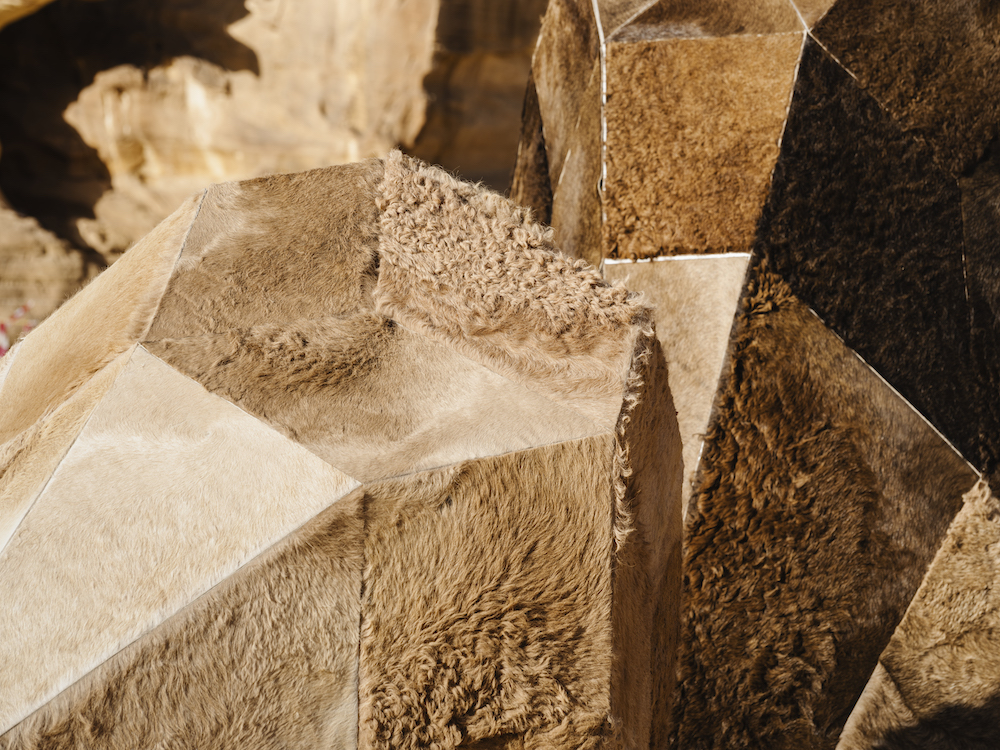 Zeinab Alhashemi installation view at Desert X AlUla 2022, photo by Lance Gerber.
Zeinab Alhashemi installation view at Desert X AlUla 2022, photo by Lance Gerber.
WW: Did you explore anything new with this project?
ZA: I understood the desert is not easy to work around. I had to accept some of the weather conditions. We’ve got challenges moving in the work, putting it together, displaying it in a certain way. I don’t know how the work will react in a couple of weeks. We will see.
There is a funny story. When you walk around and you see a camel caravan, living camels, you will see a lot of flies around them. I was walking around my sculpture and there were flies around it. That’s interesting because this camel skin is not chemically treated, so it actually smells like camel.
WW: What aspect of this project will you take back with you to the studio?
ZA: For me, it’s an ongoing search. I absorb everything—even people’s feedback. I got used to seeing the camel hides but for them to see it for the first time was interesting. The first time I saw it, I said I want to make art out of this. I’m very happy that it’s still getting some kind of interest and curiosity, positive feedback. I want to go back and make this in a different form, for a new project. Someone said I think this should come to Europe.
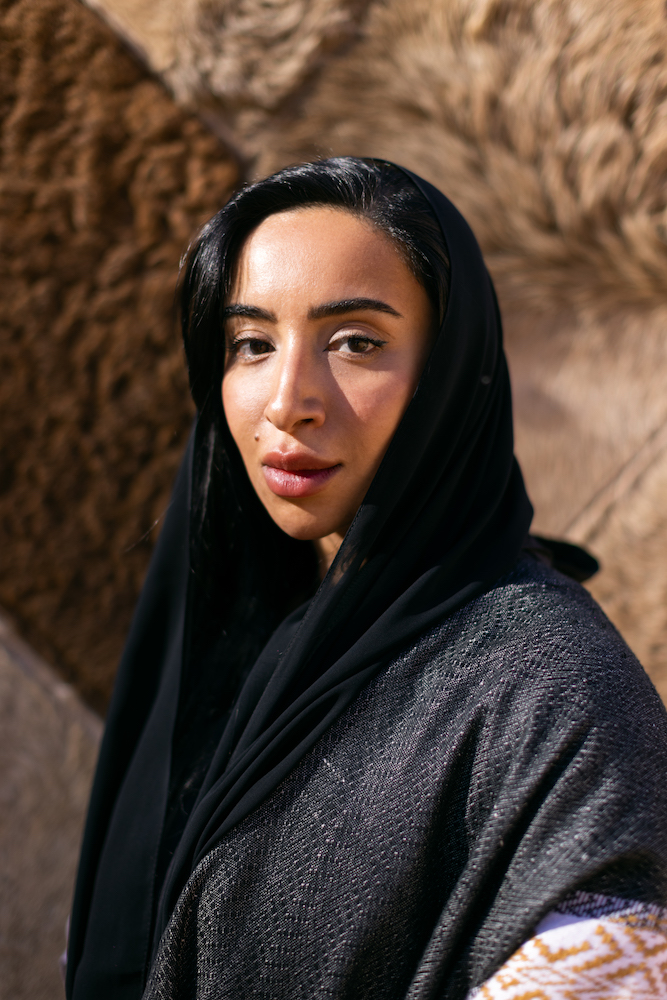 Zeinab Alhashemi, courtesy of Desert X AlUla.
Zeinab Alhashemi, courtesy of Desert X AlUla.







